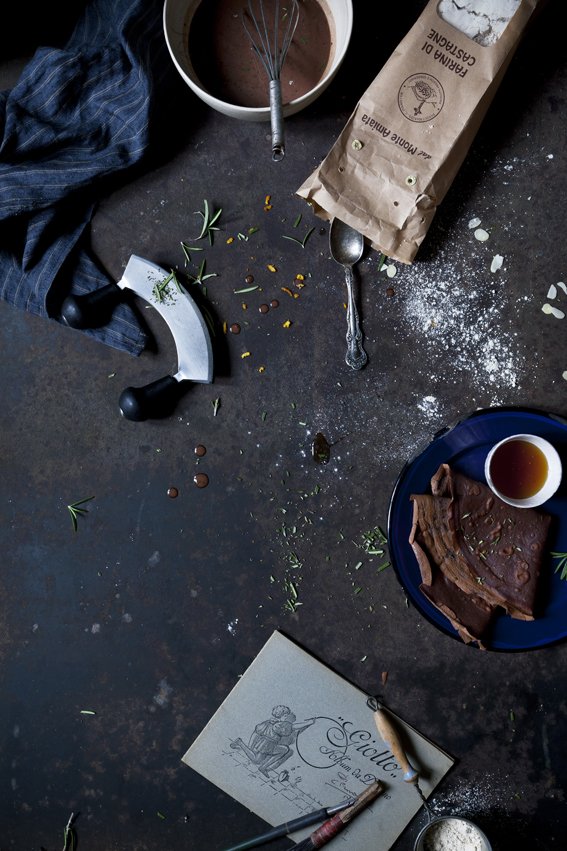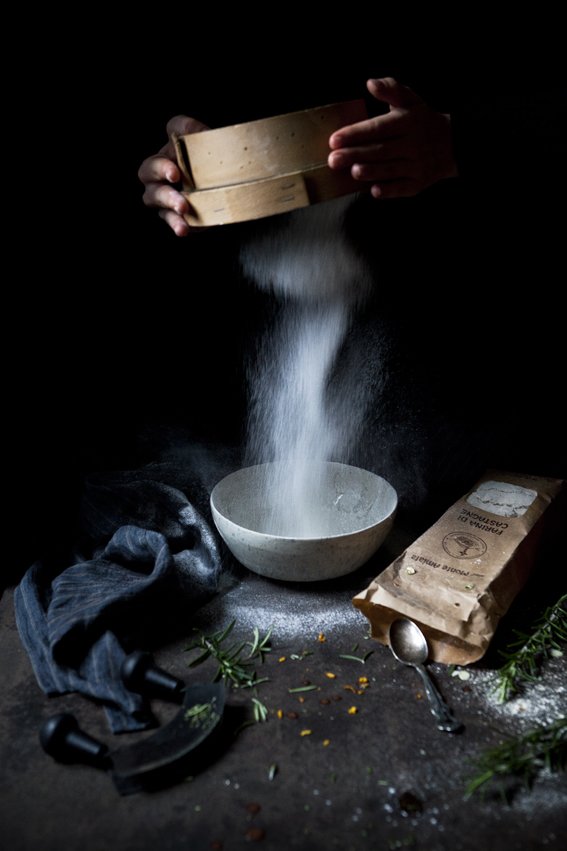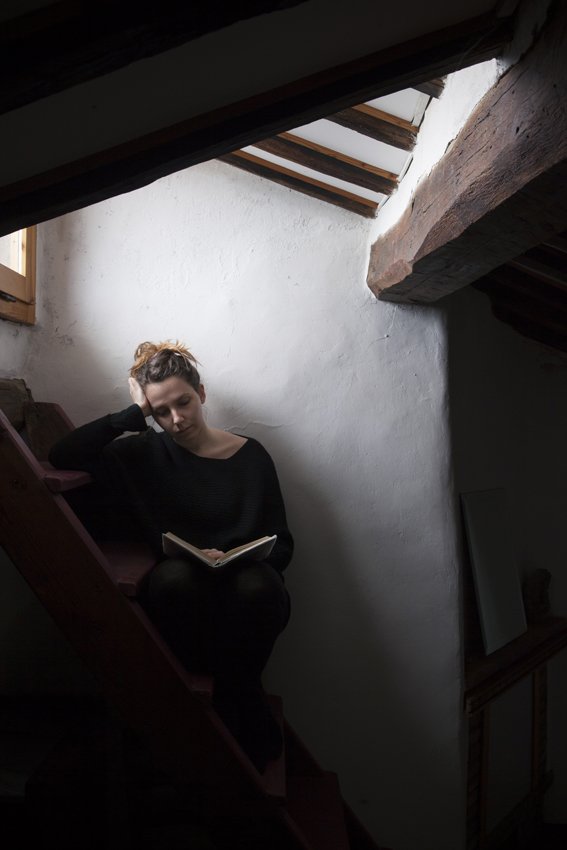Castagnaccio crepes
a slow breakfast with chestnut flour crepes with rosemary, chestnut honey, orange peel and almonds
Everything has its proper time, like a rhythm that marks the progression of life. However, it isn't always easy to find our own time. I know I have a slow rhythm, especially in the morning and it is sacred.
I need ten minutes for feeling the slightly rough linen sheets on my skin, then ten minutes for curling up wrapped in my woolen blanket while the boiler is on, and a further ten minutes for everything else; one thing at a time.
I like looking through the window at the cold winter light bouncing off the frosted lawn to make it look like a sparkling diamond, while the heat from the gas cooker warms my kitchen.
I think of the need to be able to take the time to experience a different kind of rhythm, to enjoy the slow pace of our own actions in order to get in touch with whom we are, honestly. Why do we give ourselves less and less time? Why do we feel guilty when we allow ourselves the pleasure of doing nothing, really nothing?
This reminds me of the elderly who sit on the benches of town centers, like those featured in some classic Italian films. They just sit there and look around. They watch the cars passing by, the flying pigeons, and the mums taking their children to school. At that stage in their life, they can spend their time in that way, doing nothing in particular, and they might well deserve it if they had worked hard all their life. They can now reclaim their own time and rediscover the art of living slowly.
Every stage and circumstance in life has its own rhythm, and I think this is also true for every form of art.
For every human being, time and nature have always been something of a puzzle.
Perhaps, we should find a new rhythm in life, one that is most suited to our own true nature.
Mine is naturally relaxed and melancholy. Romanticism flows in my veins and I have an urge to be free from the daily routine. Thus, when possible, I like my mornings to be always different from one another.
This comforting breakfast is a homage to slowing down; first, because of the required time for its preparation and second, for the enjoyable time, one will spend eating it. The crepes that I prefer are those made with flours different from the usual ones, such as buckwheat flour, for example, that I had already suggested for a recipe (here).
For making these crepes, I have used chestnut flour, which reminds me of castagnaccio cake, a typical humble cake of rural origins, because chestnuts were easy to find all over the countryside and were cheap but nourishing. The castagnaccio cake comes from the Apennines areas of Tuscany, Liguria, Emilia, and Piedmont but is now widely spread all over Italy, although every region makes it differently. I like the Tuscan one best because it is enriched with fresh rosemary... which makes these crepes special as well.
During the time I lived in Paris, breakfast was an important part of my slow morning routine. I have sweet memories of that time... a time of squeaky wooden floorboards under my feet, the sound of distant voices in the Boulevards, Nina Simone's warm voice in the background, and that kitchen, full of cold draughts but where even the most modest meal tasted more delicious than ever. That was the kitchen where I really learned how to make crepes, and also where I felt most nostalgic for Italian and Tuscan flavors like these.
CASTAGNACCIO CREPES
Ingredients:
(Makes about 6/7 crepes)
100g chestnut flour
80g plain flour
2tbsp of unsweetened cocoa powder
2 eggs
200ml of cow milk or rice milk
1 tbsp of extra-virgin olive oil
1 tbsp of chestnut honey
1 pinch of salt
1 sprig of fresh rosemary
1 knob of butter (for greasing the pan)
For the topping:
(Quantity as much as you like!)
unwaxed organic orange peel
sliced almonds
Chestnut honey
chopped fresh rosemary
Instructions:
Beat the eggs in a large bowl, then add the cold milk, a pinch of salt, and the chestnut honey and stir well.
Sift the two flours into the bowl, combine the unsweetened cocoa, and whisk well together to remove any lumps to make a smooth and consistent batter.
Finely chop the rosemary needles and add them to the batter.
Cover the bowl with cling film and leave it to rest in the fridge for about 30 minutes.
Grease a non-stick frying pan suitable for crepes with a knob of butter and put it on to high heat. Pour a generous spoonful of the batter over the center of the pan and tilt it until the pan is evenly coated.
Cook for 1 minute until the crepe can easily be lifted. Flip it gently and cook the other side until golden.
Repeat with the remaining batter, making sure you grease the pan each time.






